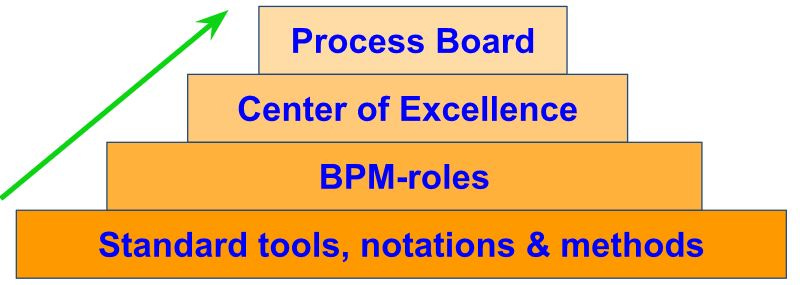A Process Governance Framework
Lately I’ve been working on a Sales Process Governance framework. Typically I would build a Sales Process Map similar to the one you see below.
But there’s a grander governing framework to ensure that not only the process you see above is continually improving, but also plugs into the wider world of processes at the company.
Enter the process governance framework. A process governance framework is a set of policies, procedures, and practices that help a company manage its processes. It's used to ensure that processes are aligned with the company's values and strategic goals, and that they're executed consistently and efficiently.
One visual I found that I really enjoyed is the following:
It starts with what is called standard tools, notations, and methods. Over the years I’ve compiled a series of tools that may add up to this:
Data dictionary
Customer Lifecycle; Process maps (the sales process map is up above)
GTM system architecture diagram
Standard Operating Procedures (SOPs) and/or Playbooks
OKRs and KPIs
Operating cadences
Building and leveraging the tools above should be sufficient to have a Revenue Operations function humming along.
But the pyramid above add up to something grander. Here is the approach that makes sense.
If you’re slammed in your RevOps or want to level up; check out the RevOps Impact Offerings below
1/ Listen to the RevOps Review on Spotify or Apple
2/ RevOps Course: Unleashing ROI (RevOps Impact). A ten-week RevOps course. Lessons from my career scaling from $10M to $100M+. Join 100+ alumni.
3/ You’re a GTM Startup. Sponsor the newsletter and reach 3,700+ tenacious revenue leaders. Reply to this email if you’re interested in receiving a media kit.
4/ 1-on-1 RevOps Coaching with me. Let me help you push through the ceiling
5/ Your a business and need strategic fractional consulting or advisory
Keep reading with a 7-day free trial
Subscribe to RevOps Impact Newsletter to keep reading this post and get 7 days of free access to the full post archives.



